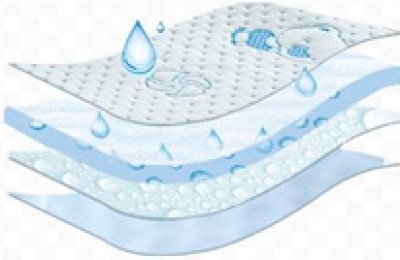1. Punishment cases
On November 5, 2020, law enforcement officers inspected a textile factory in Wuxing and found that the unit had not installed exhaust gas treatment facilities. Next, I was engaged in the production of setting machines. The smell in the workshop was obvious, and the volatile organic waste gas was directly discharged to the outside environment without effective treatment.
2. Legal basis
According to the “Atmospheric Pollution of the People’s Republic of China” According to the provisions of Paragraph 1 of Article 108 of the Prevention and Control Law and the “Zhejiang Province Ecological Environment Administrative Punishment Discretionary Regulations”, the administrative penalties imposed on the unit for environmental violations are as follows:
A .Order to make corrections;
B.A fine of RMB 60,000 (60,000 yuan).
3. Relevant legal provisions
Article 45 of the “Atmospheric Pollution Prevention and Control Law of the People’s Republic of China”: Production that produces waste gas containing volatile organic compounds and service activities should be carried out in confined spaces or equipment, and pollution prevention and control facilities should be installed and used in accordance with regulations; if it cannot be sealed, measures should be taken to reduce waste gas emissions.
Article 108 of the “Atmospheric Pollution Prevention and Control Law of the People’s Republic of China”: Anyone who violates the provisions of this law and commits any of the following acts shall be ordered to do so by the environmental protection department of the people’s government at or above the county level. If you make corrections, you will be fined not less than 20,000 yuan but not more than 200,000 yuan; if you refuse to make corrections, you will be ordered to stop production for rectification: (1) Production and service activities that generate waste gas containing volatile organic compounds, Failure to carry out work in a confined space or equipment, failure to install and use pollution prevention and control facilities in accordance with regulations, or failure to take measures to reduce waste gas emissions;
(2) Industrial coating companies fail to use low-evaporation Paints containing toxic organic matter or failing to establish and maintain ledgers;
(3) Petroleum, chemical and other enterprises that produce and use organic solvents fail to take measures to perform routine maintenance of pipelines and equipment , repair, reduce material leakage or fail to collect and process leaked materials in a timely manner;
(4) Oil and gas storage depots, gas stations, oil tank trucks, gas tank trucks, etc., Failure to install and use oil and gas recovery devices in accordance with relevant national regulations;
(5) Steel, building materials, non-ferrous metals, petroleum, chemicals, pharmaceuticals, mineral mining and other enterprises that fail to adopt centralized collection methods Treatment, sealing, enclosure, covering, cleaning, sprinkling and other measures to control and reduce the emission of dust and gaseous pollutants;
(6) In industrial production, landfill or other activities The combustible gas generated is not recycled, the conditions for recycling are not met and pollution prevention and control treatment is not carried out, or the combustible gas recycling device cannot operate normally and is not repaired or updated in time.
4. Knowledge link
Volatile organic compounds are commonly represented by VOCs. According to the definition of the World Health Organization (WHO), VOCs (volatile organic compounds) It is a variety of organic compounds with boiling points of 50°C to 260°C at room temperature. In my country, VOCs refer to organic compounds with a saturated vapor pressure greater than 70 Pa at normal temperature and a boiling point below 260°C at normal pressure, or all volatile organic compounds with a vapor pressure greater than or equal to 10 Pa at 20°C.
Usually divided into several categories such as non-methane hydrocarbons (NMHCs for short), oxygen-containing organic compounds, halogenated hydrocarbons, nitrogen-containing organic compounds, and sulfur-containing organic compounds. VOCs participate in the formation of ozone and secondary aerosols in the atmospheric environment, which have an important impact on regional atmospheric ozone pollution and PM2.5 pollution. Most VOCs have unpleasant special odors and are toxic, irritating, teratogenic and carcinogenic. In particular, benzene, toluene and formaldehyde can cause great harm to human health. VOCs are important precursors that cause urban haze and photochemical smog. They mainly come from processes such as coal chemical industry, petrochemical industry, fuel coating manufacturing, and solvent manufacturing and use.
Due to the complex sources of VOCs emissions, diverse emission forms, and various types of substances, it is difficult to establish a VOCs pollution prevention and control system. Therefore, how to comprehensively carry out VOCs pollution prevention and control in line with my country’s actual conditions is an urgent, arduous and complex task. </p






